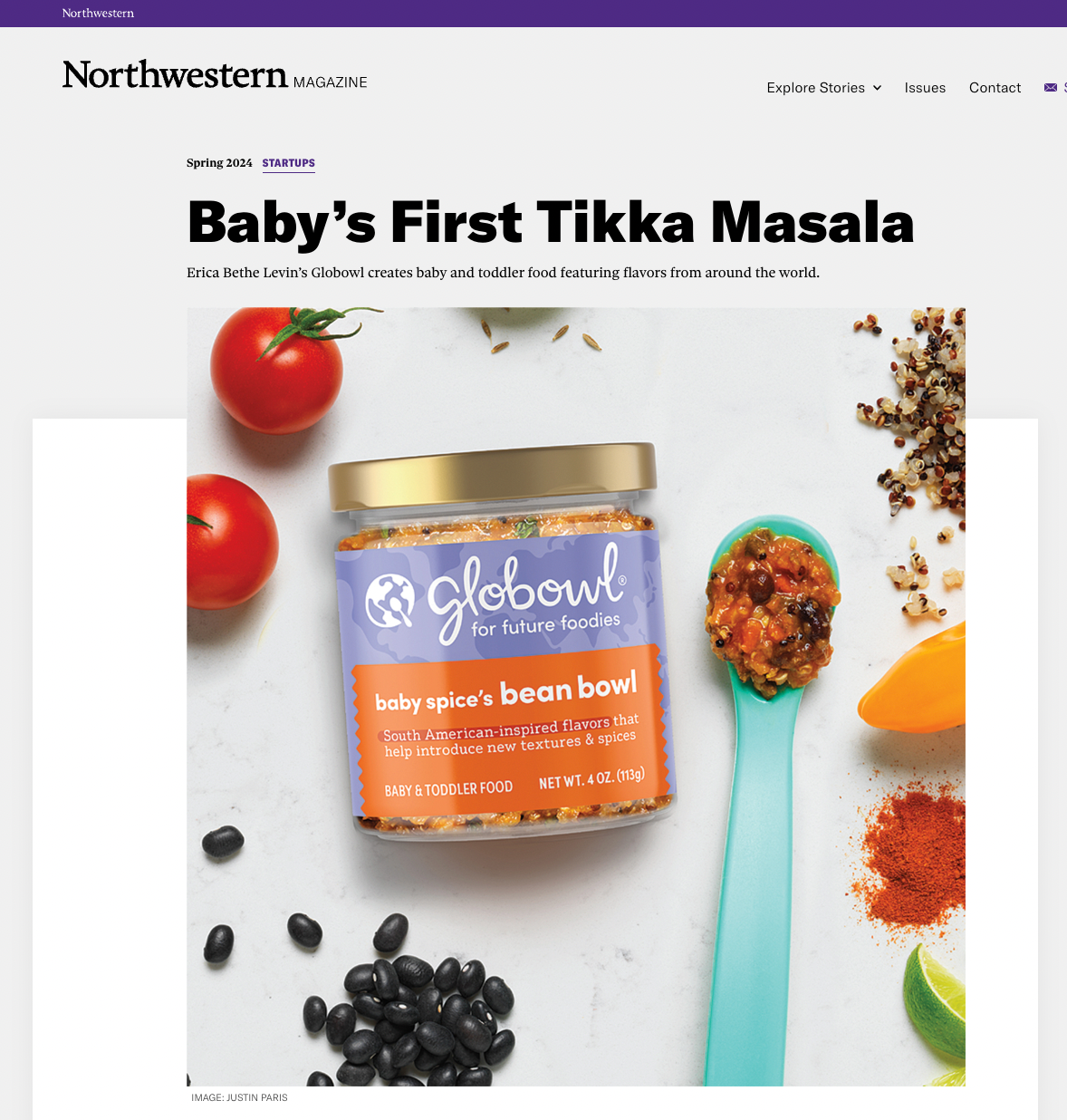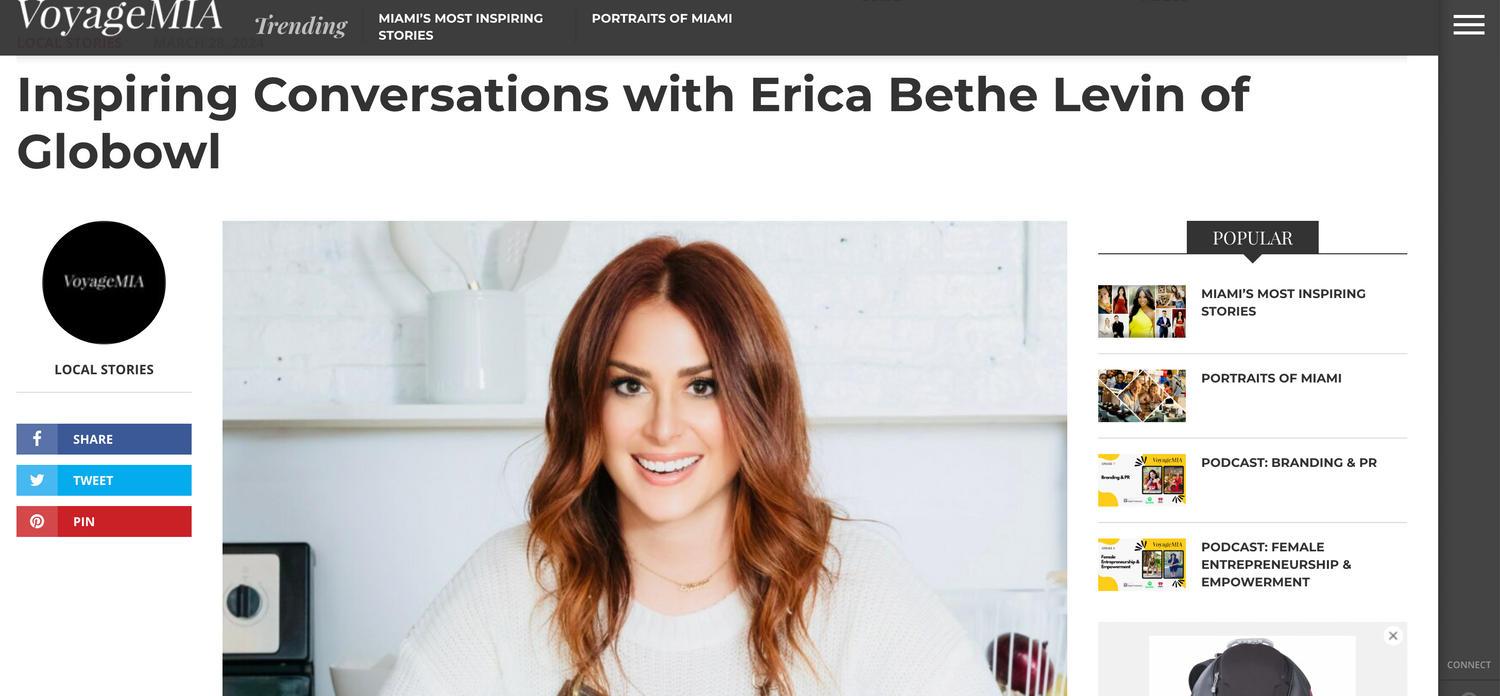Contributor: Joan O'Connor
In this two-part blog series, we are diving into why the container for your child's food matters.
We are often asked why we chose glass rather than single-use plastic pouches or containers for Globowl’s packaging. This is a question we love to answer because our choice has everything to do with our commitment to providing the healthiest options for your baby or toddler.
In part 1, we discussed how plastic packaging can leach (leak or transfer) harmful chemicals into food content. We also touched upon how we still don't know enough about BPA -Free plastics to consider them safe for kids.
Here are two additional discoveries that shaped our desire to use glass jars:
#3: When plastic is stressed, it releases tiny plastic particles that your baby ingests.
These tiny particles are known as microplastics (MPs) and nanoplastics (NPs). MPs are less than 0.2 inches in diameter and NPs are so small they are undetectable to the human eye.
MPs and NPs are not just plastic; they can also contain toxic chemicals that can be inhaled, ingested, or transferred from skin contact. NPs are particularly worrisome because they are so miniscule, they can make their way into our bloodstream and transport potentially toxic chemicals throughout our children’s bodies.
A WWF study discovered on average people are consuming about 2,000 tiny pieces (roughly 5 grams) of plastic particles every week which is about the equivalent of a credit card.
If a plastic food container sheds toxic MPs, consequences for children are bigger than adults. According to the American Academy of Pediatrics, children are “particularly vulnerable to the effects of chemicals added to foods because they eat more per pound than adults, and their developing organ systems may be susceptible.”
There are very few studies on plastic involving the effects on children. However, scientists from the University of Nebraska-Lincoln were particularly curious about baby food that is packaged in plastic pouches that are heated in a microwave oven and marketed as healthier than other baby foods. In their 2023 study they tested a variety of baby food pouches by exposing them to extreme temperatures and then measuring the MPs.
The researchers simulated refrigeration of the pouches for six months and later heated them in a microwave oven for various amounts of time. The results varied but they all contained high amounts of plastics. For example, when refrigerated, one of the pouches released 580,000 microplastic fragments and when the same pouch was microwave oven heated, 4 million MPs were released.
We did a little more digging and discovered a Nature Foods journal study in 2020 that researched polypropylene plastic baby bottles while preparing infant formula. Researchers discovered that when the formula’s temperatures reached 158° Fahrenheit, the heat exacerbated the flaking of microplastics (MPs) releasing as high as 16 million MPs and trillions of nanoplastics (NPs) per liter. Even if the chemicals in the plastic particles are not toxic, it is a lot of plastic for littles to be ingesting.
We were unable to locate prior research connecting plastic particle contamination to human health impacts until we came across a significant study published by The New England Journal of Medicine in March, 2024. This study demonstrates the potential correlation between nanoparticles (NPs) present in arteries and increased risks of heart attacks, stroke, or mortality.
Although the exact mechanisms of how these NPs enter the bloodstream (whether through inhalation, ingestion of contaminated food or water, etc.) remain undetermined, individuals with NPs detected in their arteries face elevated health risks compared to those without such particles.
Hopefully this study will lead to more research on how NPs affect human health which many experts agree is needed, particularly regarding children’s exposure. The FDA regularly monitors food-grade plastics and there are ongoing research studies examining the health implications of these tiny plastic
particles. However, we are still awaiting definitive conclusions from the independent research studies.
Globowl’s Verdict: We don’t want to risk exposing any child to potential ingestion of MPs or NPs and potential long-term health effects. Therefore, we are abiding by the American Academy of Pediatrics recommendation for storing or preparing food in glass containers.
#4: Recycling plastic baby food pouches and caps is challenging because they are not curbside recyclable and require a mail-in recycling program, which is one extra step for busy parents. So, what happens if they’re not recycled?
When not recycled, these pouches end up in land or aquatic environments where weathering causes the release of MPs and NPs and potentially toxic chemicals into the air, land, and water. These MPs and NPs can compromise your child’s health by polluting our water supply, food sources (wildlife, fish, and crops), and air, which is creating an overwhelming environmental crisis.
The sobering reality is that plastic eventually reaches a point where it is no longer suitable for recycling. Plastic can only usually be recycled two or three times before the quality becomes too degraded. Once useless, the plastic ends up being incinerated or dumped into landfills.
MPs and NPs have been found in human intestines, placentas, and all regions of lungs. Regarding the type of microplastics found in lungs, a 2022 study identified that polypropylene (what many baby food pouches and baby bottles are made of) and polyethylene terephthalate fibers were the most abundant. The results indicate that exposure was due to inhalation.
Globowl’s Verdict: These statistics along with the 2050 prediction caused us to be very concerned that human health effects of plastic will be even more damaging than imaginable. Glass does not release MPs or NPs into the environment even when not recycled.
We also want to note that sustainability is very important to us and we could not make a packaging decision without addressing the question: Is glass or plastic better for the environment? During our research we encountered many agendas either adamantly pro-glass or pro-plastic until we found this balanced and informative article written by Kathryn Kellogg, author of 101 Ways to Go Zero Waste.
Kellogg breaks down the environmental pros and cons of plastic and glass by examining raw materials, emissions, energy, and end-of -life (recycling or landfill). She concluded that both glass and plastic negatively impact the environment. However, she concludes that the answer is not cut and dry and that one was not overall better for the environment than the other.
After conducting extensive research and reading Kellogg’s article, we remain committed to glass packaging. The fact that plastic, once discarded, continues to release toxic chemicals into their surrounding environment became the tipping point for us in choosing glass.
At Globowl, our passion revolves around ensuring your little ones enjoy healthy, nutrient-rich meals in the safest manner possible. We firmly believe that opting for glass jars is the optimal choice to fulfill this objective.
Next time you reach for a plastic pouch for your child, consider the alternative options available that offer the convenience of on-the-go usage along with the advantages of a structured mealtime experience. These choices greatly influence a baby's development.
Look for our next blog article offering tips on how to limit the release of microplastics and nanoplastics into your baby’s food and liquids when using plastic baby ware.


![[PART 2] Glass or Plastic Baby Food Packaging? A Decision with Potential Health Consequences for Your Child’s Entire Life](http://globowl.com/cdn/shop/articles/globowl-blog.jpg?v=1713451249&width=3000)


